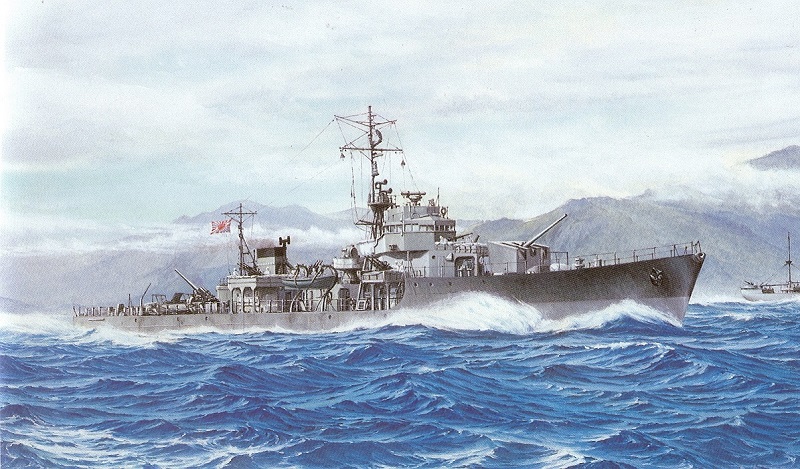© 2009 Bob Hackett, Sander Kingsepp and Peter Cundall
1 December 1944:
Kobe. Laid down at Mitsubishi Heavy Industries’ shipyard.
26 February 1945:
Launched and numbered CD-217.
17 July 1945:
Completed and registered in the IJN.
15 August 1945:
Japan accepts the Allies “Potsdam Declaration” (of unconditional surrender) and hostilities cease.
30 November 1945:
Removed from the Navy List.
1 December 1945:
Assigned to the Allied Occupation Forces as a minesweeper. [1
5 September 1947:
Nagasaki. Ceded to the United Kingdom.
10 February 1948:
Nagasaki. Scrapped by Koyakishima.
Authors' Note:
[1] In 1945, the U. S. Army Air Force launched a five-phased campaign known as “Operation Starvation” to mine Japan’s home waters. The USAAF used 80 to 100 B-29 “Super Fortress” heavy bombers of the 21st Bomber Command based at Tinian in the Marianas. The B-29s could carry seven 2,000 lb. or twelve 1,000 lb. mines.
Beginning on 27 March 1945 and continuing until 5 August 1945, the B-29s flew 1,529 nighttime radar sorties and laid 4,900 magnetic, 3,500 acoustic, 2,900 pressure and 700 low-frequency mines for a total of more than 12,000 mines laid in Japanese waters. These mines sank 294 ships, damaged 137 beyond repair and damaged another 239 that could be repaired. The total was 1, 250,000 tons sunk or damaged or about 75 percent of Japanese shipping available in March 1945. Only 15 B-29s were lost during the mining campaign.
Postwar, removal of these mines posed a major challenge for the Allied Occupation Forces. They pressed 269 Japanese ships of various types into mine sweeping service to augment their own efforts.
Thanks for assistance go to Dr. Higuchi Tatsuhiro of Japan.
-Bob Hackett, Sander Kingsepp and Peter Cundall
Back to
Escort Page



